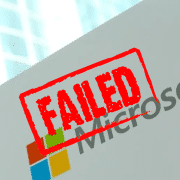Brand Partnership Manager
It’s easy to forget in all the chaos and frustration of running a startup that your life is likely the envy of many people at the moment. They either don’t see or overlook all the pain of launching a startup.
Take heart and take heed. If you are starting a business or joining an early-stage startup, you are envied by 4 out of 10 working Americans who say they wish they could live your life. Another recent study found that nearly 2 out of 3 millennials dream of becoming entrepreneurs. You can take that as a vote of encouragement or a warning of future competition.
The North Star: Process Efficiency Will Guide Your Startup Through Treacherous Waters
In any case, from the point of view of those who have tried yet, you have already won. They see you as someone who has cast off the anchors of bosses and schedules to courageously captain your ship out on the wild, tumultuous seas of the market. Of course, the jarring reality of enduring one unpredictable storm after another is likely to leave you feeling more seasick than heroic. Listen to them. There is a hidden value in this viewpoint. Put yourself in their place and see your startup from an emotional distance.
What should become instantly clear is the “why” of what you are doing. Yes, there have been waves of crushing setbacks, but traditional jobs have those too. The difference is that all of your efforts are going into your mission, not in service of a corporate mission statement.
This should clarify which business processes move you closer to that goal and which are soaking up far too much of your resources. You have a finite amount of time and concentration, which are far more valuable than money.
For some entrepreneurs, it takes a financial shock to arrive at this understanding, such as a cash flow crisis or a cessation of growth. Others get here by benchmarking their startup against the competition’s areas of excellence. Whatever brought you here, business process efficiency will take you to your next station along the startup maturity odyssey.
The Three Stages of A Startup
Roughly following the Capability Maturity Model Integration (CMMI) best practices, startups tend to move more or less through three stages of business process efficiency.
Stage 1: Fiat. Startup processes tend to be chaotic and undefined, successfully dependent on individual efforts that don’t scale.
Stage 2: Codified. Processes are documented but not always followed. Metrics are put in place to measure performance and processes are documented to some degree. Lean startups engage the Build-Measure-Learn loop.
Stage 3: Optimal. Metrics are refined and customized. The company adopts quality standards such as ISO. Innovation culture turns inward for continuous process improvement.
This model evaluates how closely execution compares to goal and which business processes have the biggest impact on performance overall.
Which Business Processes Matter Most?
Among all the crises that cry out for attention, choose these first, as they will put out many of the other fires by default.
Financial processes
Some people will tell you that the customer comes first. Others will say you need a market identity to attract the right community of customers, partners, and suppliers. That’s all partially true, but none of it matters if you don’t know how much money you have and how much you are spending on operations. Break apart your personal and business accounts as swiftly as possible, if not earlier. Get an accountant or accounting software to keep a formal record of assets, liabilities, revenues, expenses, and cash flow. Nothing else makes sense if this is not in place.
Funding processes
Closely related but separate from the above process, you need to know where your funding is coming from and how long you have before you crash into the rocks. Most entrepreneurs bootstrap, at first, with their money and money from friends/family, but you require a record of your inputs, burn rates, and how soon your benefactors expect to be paid back. Personal loans are also common at first in some sectors. Maintaining a cap table is a necessity.
The funding process is extremely complex because you may not know exactly how much things will cost, and there are many unknowns, so you need to rough sketch your path and move on to the next process quickly.
Talent processes
What don’t you know? Find the partners, investors, and mentors you need to refine the two earlier processes. This comes with legal and tax implications, so you’ll need advisers with those talents if you don’t already have them on board.
Technology processes
So much has changed in the past few years regarding what technology can do for a startup that someone with great experience may not be useful. That sounds harsh, but the reality is that someone who can learn and unlearn quickly is already ahead of the competition. What do you know about the cloud? Forget the cloud. What do you know about fog computing? Forget Bluetooth. What do you know about Near-Field Communication (NFC)? Get your data security under control to comply with California’s CCPA and bring on someone who considers the mobile web ancient technology.
Performance processes
The last of the essential business processes to concentrate on is the most important, but you can’t get there without the other four. The Build-Measure-Learn loop may be the most useful piece of the Lean Startup methodology. It emphasizes testing hypotheses over taking advice from anyone about anything, including this blog. Innovation is all about doing what’s never been done, so you will have to break some rules to make it. Question every assumption, test your new hypothesis rigorously, then refine and build something new. Find the talent you need to build customized metrics and interpret what the data is telling you.
Know What to Cut When Money Gets Tight
The only thing more instructive than learning from failure is learning from the failure of others. After analyzing postmortems from 101 startup failures, C.B. Insights reported that although most startups listed multiple reasons for the crash, there were a few recurring themes.
- Not enough research upfront
42% said there was simply no market need
17% said their product was not user-friendly or didn’t have a solid business model
13% said the timing was off - Inadequate financial planning
29% ran out of cash/runway
18% identified pricing vs. cost imbalances
8% weren’t able to secure funding - Not enough cohesiveness among cofounders
23% said the team didn’t have the talent
13% reported the team couldn’t get along with the investors
9% just lost their passion
Process efficiency analysis could have alerted company leaders to these failings early enough to do something about it.
In cases where founders rush to market before thoroughly researching market conditions, Financial Process efficiency would have saved them. Trends in Customer Acquisition Cost reveal how hard it will be to grow your customer base. Drill down into Customer Churn Rates to determine how profitable specific customer types are, how long they tend to stay, and what effect the sales channel has on loyalty.
For planning failures, financial and Funding process efficiency might have made the difference. Metrics like Revenue Run Rate (changes in sales development) indicate where future pricing problems will come from. Burn Rates (monthly cash expenditure projections) let you know precisely how much time you have left to resolve the issues.
A Way to Restore your Startup Profitability
Finally, performance process efficiency comes into play whenever a startup needs a quick win to recover profitability. In most cases, you are better off ramping up sales leads than looking to squeeze savings from tight budgets. Unlike a large enterprise, that can coast on the reputation of their channel partners; startups can’t afford to shut down awareness campaigns.
What they can do, however, is adjust their marketing strategy to reach more people at a lower cost per customer acquisition rate. Social media has made it much easier for startups to maintain a dramatic online presence, even with a slim budget, using a combination of experiential marketing and user-generated content. Talent and Technology process efficiency matter most here. You need to have someone on board with enough awareness of the field to know what’s possible and on the verge of becoming possible.
There are no safe ports to wait out the storm in the real world. You will have to build your tiny startup to withstand the typhoons and maelstroms of the high seas and repair the damage as you go. Although this metaphor has clear limitations, it can help to buoy your resolve when things get rough, as they must. Prioritize business process efficiency below decks and get your crew in order. Your ship is sailing right on course to those on shore, and your example can inspire them to build their boats.













